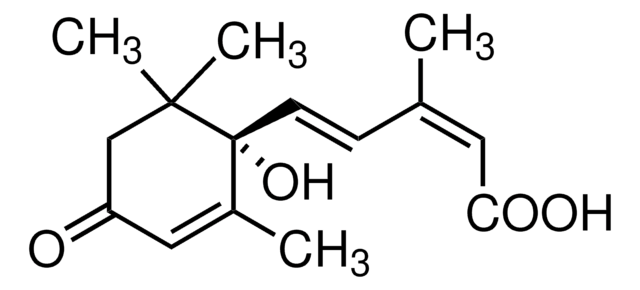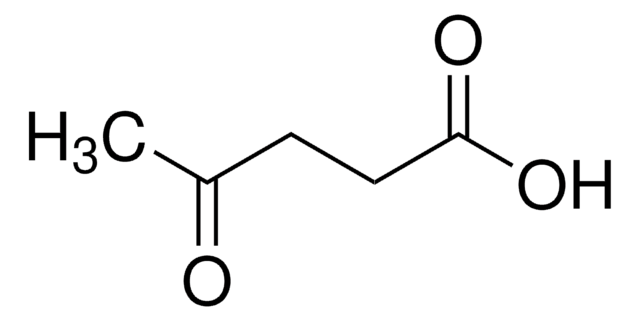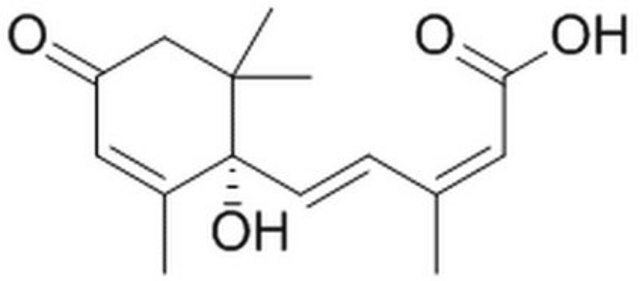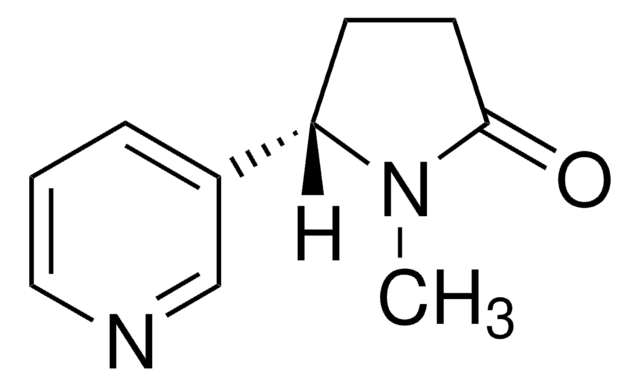A6476
ABT-418 hydrochloride
powder, ≥98% (HPLC)
Synonym(s):
3-Methyl-5-[(2S)-1-methyl-2-pyrrolidinyl]isoxazole hydrochloride
About This Item
Recommended Products
Assay
≥98% (HPLC)
form
powder
storage condition
desiccated
solubility
H2O: soluble 15 mg/mL
originator
Abbott
SMILES string
Cl.CN1CCC[C@H]1c2cc(C)no2
InChI
1S/C9H14N2O.ClH/c1-7-6-9(12-10-7)8-4-3-5-11(8)2;/h6,8H,3-5H2,1-2H3;1H/t8-;/m0./s1
InChI key
VOXHERKWAIEJQF-QRPNPIFTSA-N
General description
Application
Biochem/physiol Actions
Features and Benefits
Legal Information
Signal Word
Danger
Hazard Statements
Precautionary Statements
Hazard Classifications
Acute Tox. 2 Dermal - Acute Tox. 2 Inhalation - Acute Tox. 2 Oral
Storage Class Code
6.1A - Combustible acute toxic Cat. 1 and 2 / very toxic hazardous materials
WGK
WGK 3
Flash Point(F)
Not applicable
Flash Point(C)
Not applicable
Regulatory Listings
Regulatory Listings are mainly provided for chemical products. Only limited information can be provided here for non-chemical products. No entry means none of the components are listed. It is the user’s obligation to ensure the safe and legal use of the product.
JAN Code
A6476-VAR:
A6476-BULK:
A6476-5MG:
A6476-25MG:
Choose from one of the most recent versions:
Already Own This Product?
Find documentation for the products that you have recently purchased in the Document Library.
Our team of scientists has experience in all areas of research including Life Science, Material Science, Chemical Synthesis, Chromatography, Analytical and many others.
Contact Technical Service








